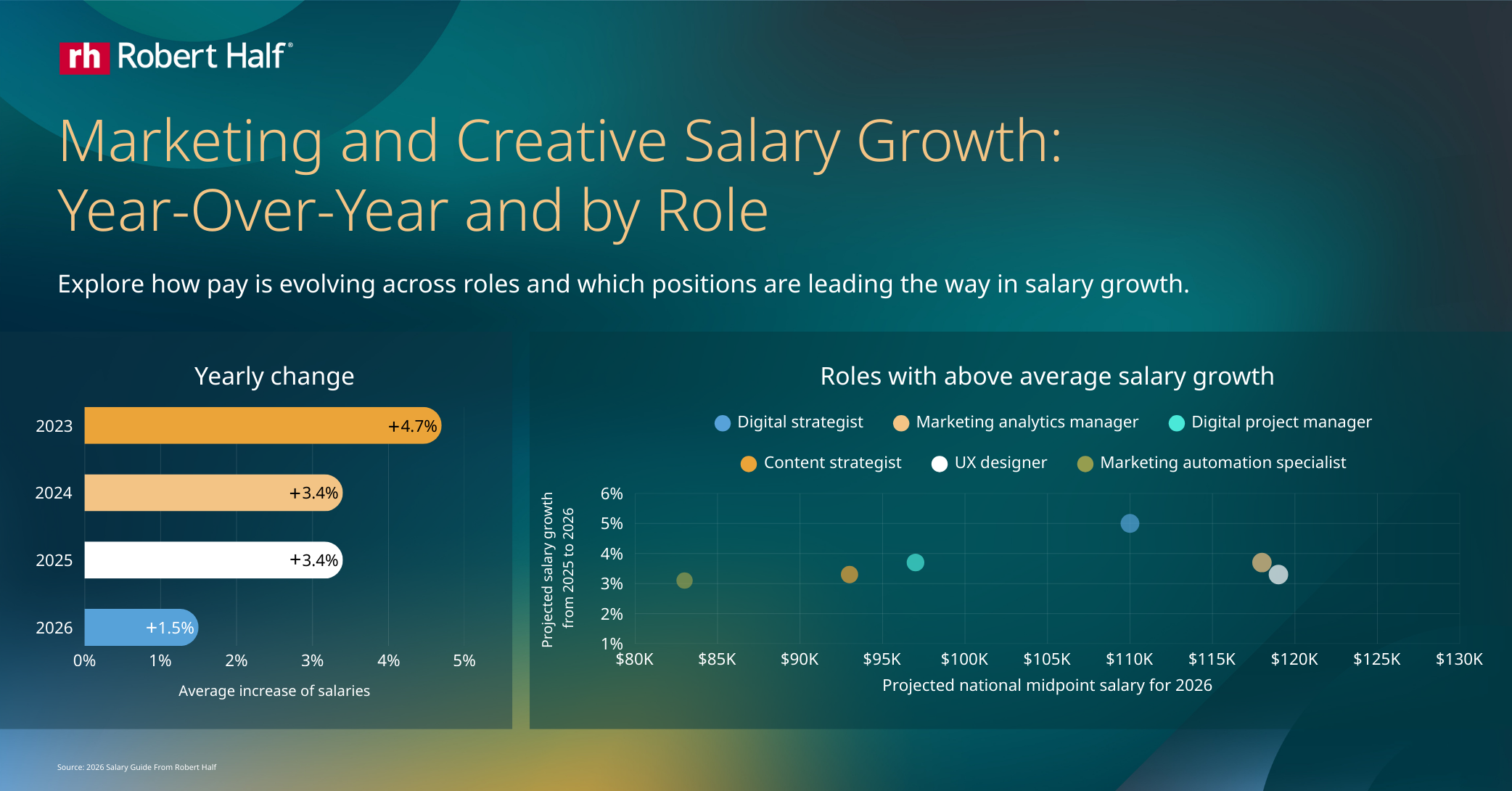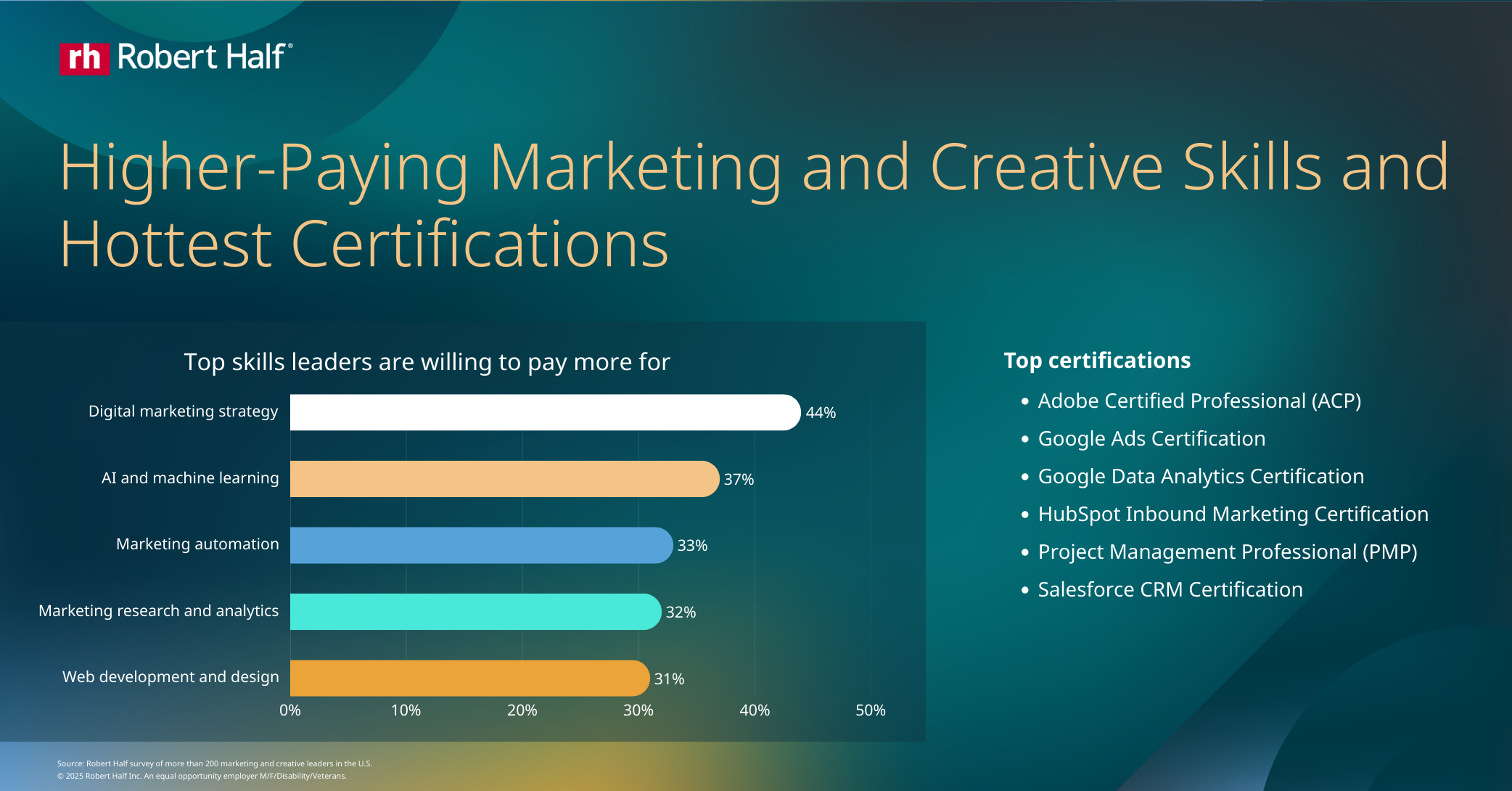Marketing and creative salary growth in context
Looking back at recent projections shows how the market has evolved—and where new opportunities are emerging. Heading into 2026, salaries are projected to rise 1.5% on average.
While growth has slowed, it remains steady and strategic. The strongest projected gains are in content strategy, digital project management and marketing analytics (+3.3%), where employers value professionals who combine creativity and a customer-first mindset with AI fluency and data-driven insight.
The market is shifting toward specialization. Professionals who build expertise in these areas, as well as digital marketing and UX design, should continue to find strong opportunities even as overall salary growth moderates.
Roles driving higher salaries in marketing and creative
Several positions stand out for above-average projected salary growth in 2026, where employers are willing to pay more and where professionals can build meaningful, future-ready careers. Today’s marketing and creative teams are shaping strategy, producing content, optimizing campaigns and connecting data insights with brand storytelling to drive measurable results.









